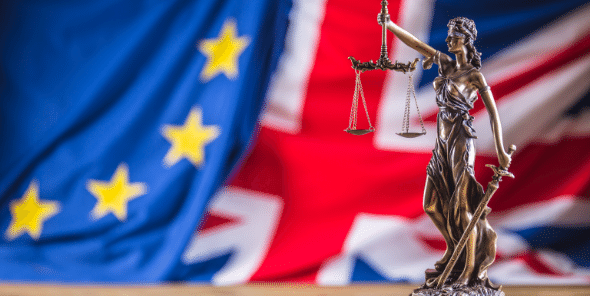The Trademark laws in the UK align with other EU countries. Though consideration is given to an unregistered trademark that has been in long use and has developed goodwill of its own, strong preference is given to registering a trademark in the UK. There are various legislations governing trademark laws in the UK, including the Trade Marks Act 1994, Trademark Rules 2008, EU Trademark Regulations, etc. Also, various conventions on trademarks are applicable.
Registration of a Trademark in the UK
Registered protection for a trademark in the UK may be obtained by one of three routes:
1. Application filed at the UKIPO to obtain a UK trademark registration;
2. Application filed at the EUIPO to obtain an EU trademark registration; and
3. Application filed at WIPO to obtain an international registration designating either the UK or the EU.
Registration under UKIPO, which is the authority which deals with IP related matters in the UK, is obtained by Section III. The application fee is £170 and an additional £50 for each additional goods or service. The application should set out the mark applied for, the goods and services specified, set out in class order, according to the Nice Classification, and the proprietor’s name and address. An address for service in the European Economic Area must also be provided. When an applicant claims priority under the Paris Convention, it should include the priority applications’ basic details.
The applicant must make a declaration in the form stating-
The trademark is being used, by the applicant or with the applicant’s consent, in relation to those goods or services, or that there is a bona fide intention that it should be so used.
Once an application has been filed at the UKIPO, a filing receipt will be issued promptly, and the application will be examined within three to six weeks. If no objections are raised, it will be published in the Trade Marks Journal. The publication opens a period of two months (extendible by one month at a potential opponent’s request) during which third parties may oppose a registration. If no oppositions are filed, the application should proceed for registration within approximately five months of applying.
The UKIPO examines an application to assess whether the mark applied for is inherently registrable. An objection will be raised if the mark is:
i) Devoid of any distinctive character;
ii) Descriptive of any characteristic of the goods or services in respect of which the mark is to be used);
iii) A shape (or any other mark with a characteristic):
iv) Resulting from the nature of the goods themselves;
v) Necessary to obtain a technical result; or
vi) Giving substantial value to the goods;
vii) Contrary to public policy or principles of morality;
viii) Deceptive;
ix) Its use is prohibited by any rule of law;
x) It is or contains, for example, the royal coat of arms, the royal flags, heraldic arms, flags of the UK or national emblems of Paris Convention countries; or
xi) The application has been made in bad faith.
If an objection is raised under category (a) or (b) above, the applicant will be given two months to provide submissions or evidence in response. The applicant can also prove that the mark has acquired distinctiveness. For this, the applicant needs to provide evidence that the mark has been in use for at least 5 years in most of the UK.
An objection raised under categories (c) to (h) above may not in law be overcome by acquired distinctiveness.
The Manual of Trade Marks Practice gives the approach while dealing with certain categories of marks, but lately, UKIPO decides the merits on a case to case basis.
Prior Rights and Procedure for Opposition
The UKIPO, instead of raising any objections to an application on its own motion with regards to an earlier trademark, searches the UK trademark register, EU and International register as well. If there is any such conflicting mark, the same is forwarded to the applicant, who gets two months to either limit or withdraw his application or seek the prior owner’s consent to prove that such issue has been raised incorrectly.
If the applicant gives no response, then such application is published in the Trade Marks Journal. Third parties may oppose such publication during the period of two months from publication. During the same time, the owner of prior rights may write to UKIPO to notify the existence of his rights to the person whose mark conflicts with his.
The party with an earlier trademark can oppose the registration of such a trademark based on his rights. Such a person is required to file form TM7 and shall give the details of his rights, whether registered or pending, and shall claim that the use of the applicant’s mark is likely to confuse. Then, after examination by the UKIPO, a period of two months is given to applicants to file their counter statement on form TM8, either admitting or denying the opposition’s claim.
After assessing such counterstatement, a period of two months is allotted to the opponent for filing any facts, submissions, or evidence. It furthers a period of two months for the applicant to file evidence or submissions regarding their respective claims. Again a period of two months is given to the opponent to file his reply.
After this stage, either by consensus or either party could request a hearing in front of the hearing officer. A decision is likely to be given by such authority within 12 months of the applicant’s filing of refusal of the opposition’s application. An award of costs will also be made in favor of the winning party.
An opponent can also make a post-registration application to invalidate or revoke a mark registered in the applicant’s name.
Appeals
Decisions by the UKIPO may be appealed to the High Court of England and Wales, the Court of Sessions in Scotland, or the High Court in Northern Ireland.




